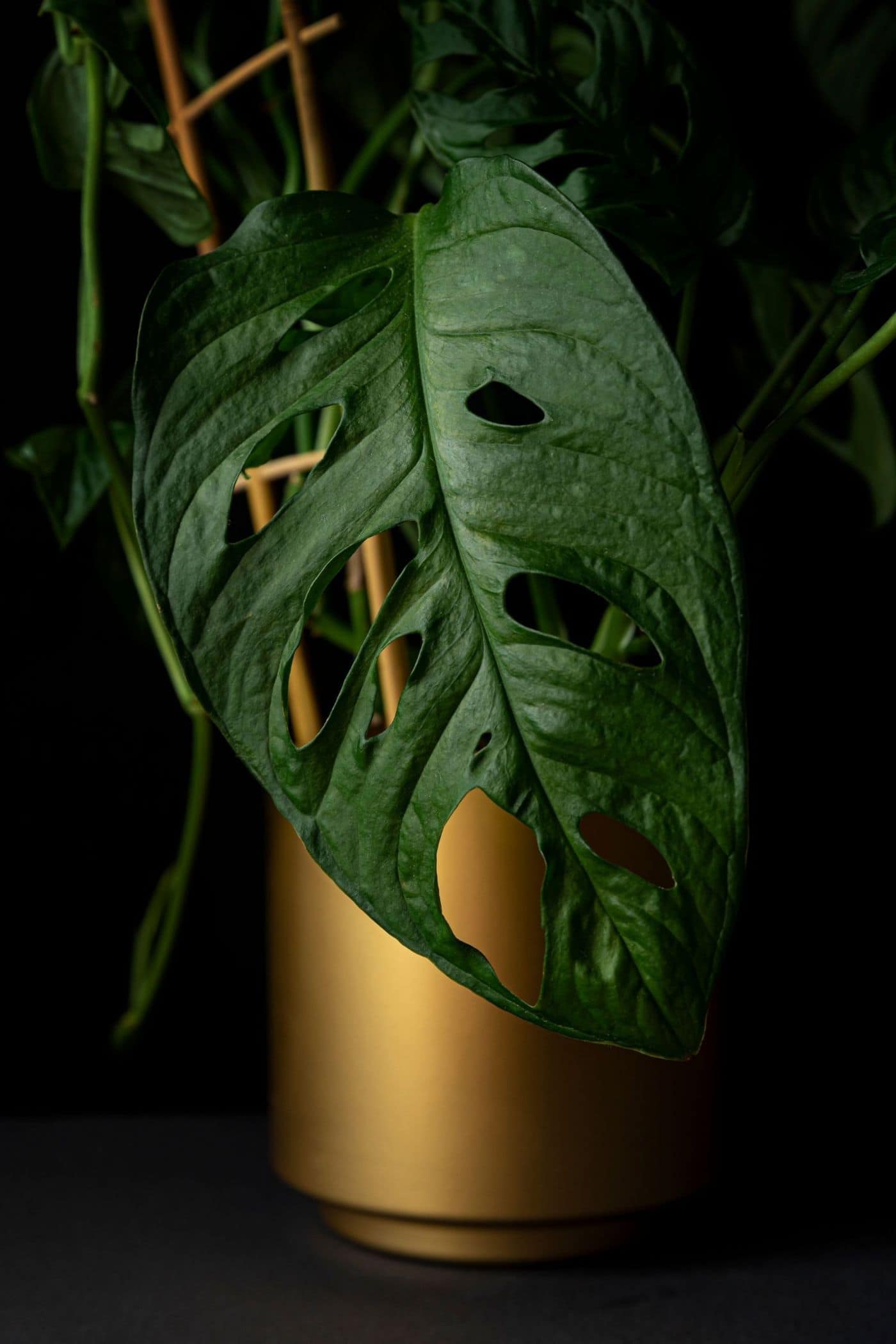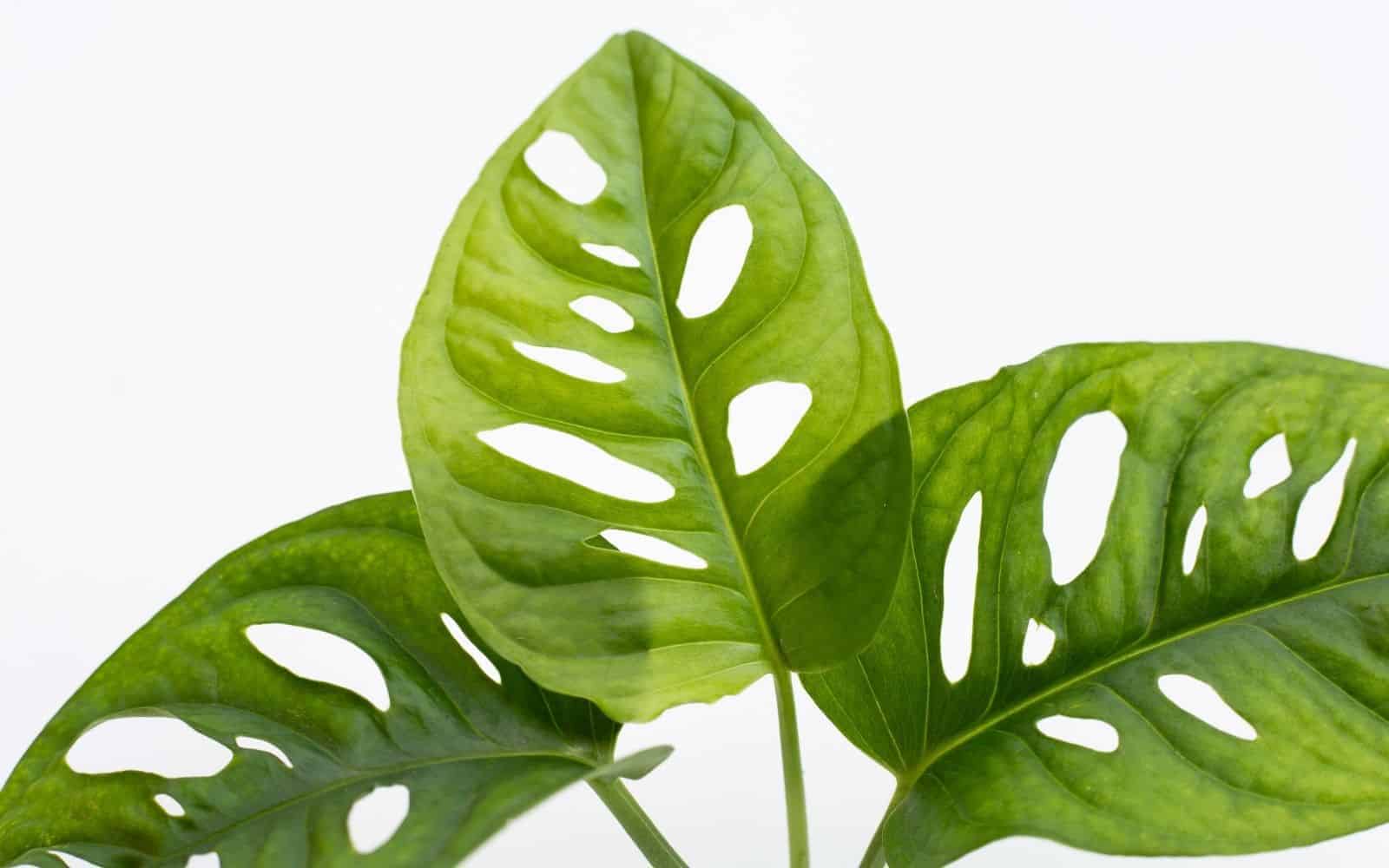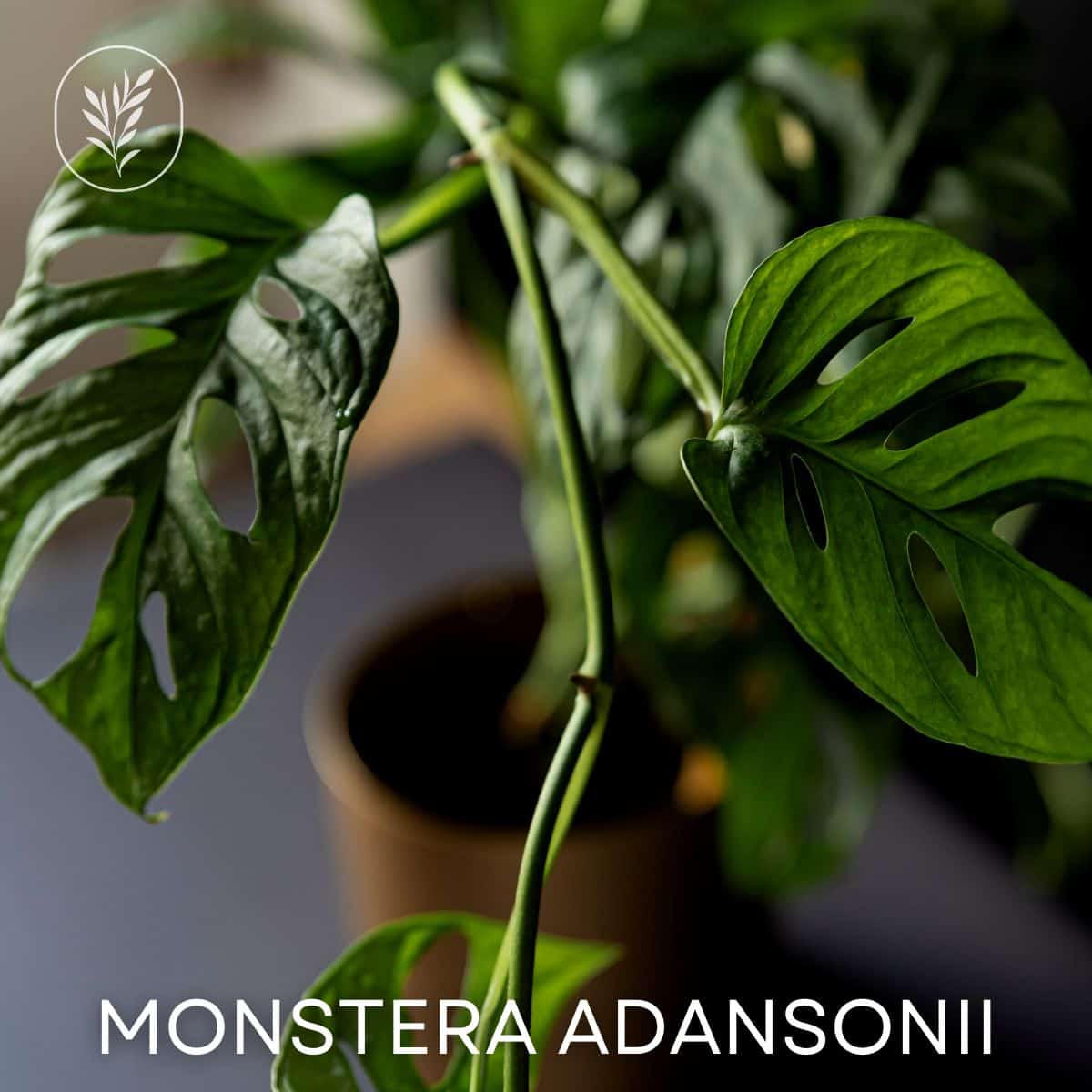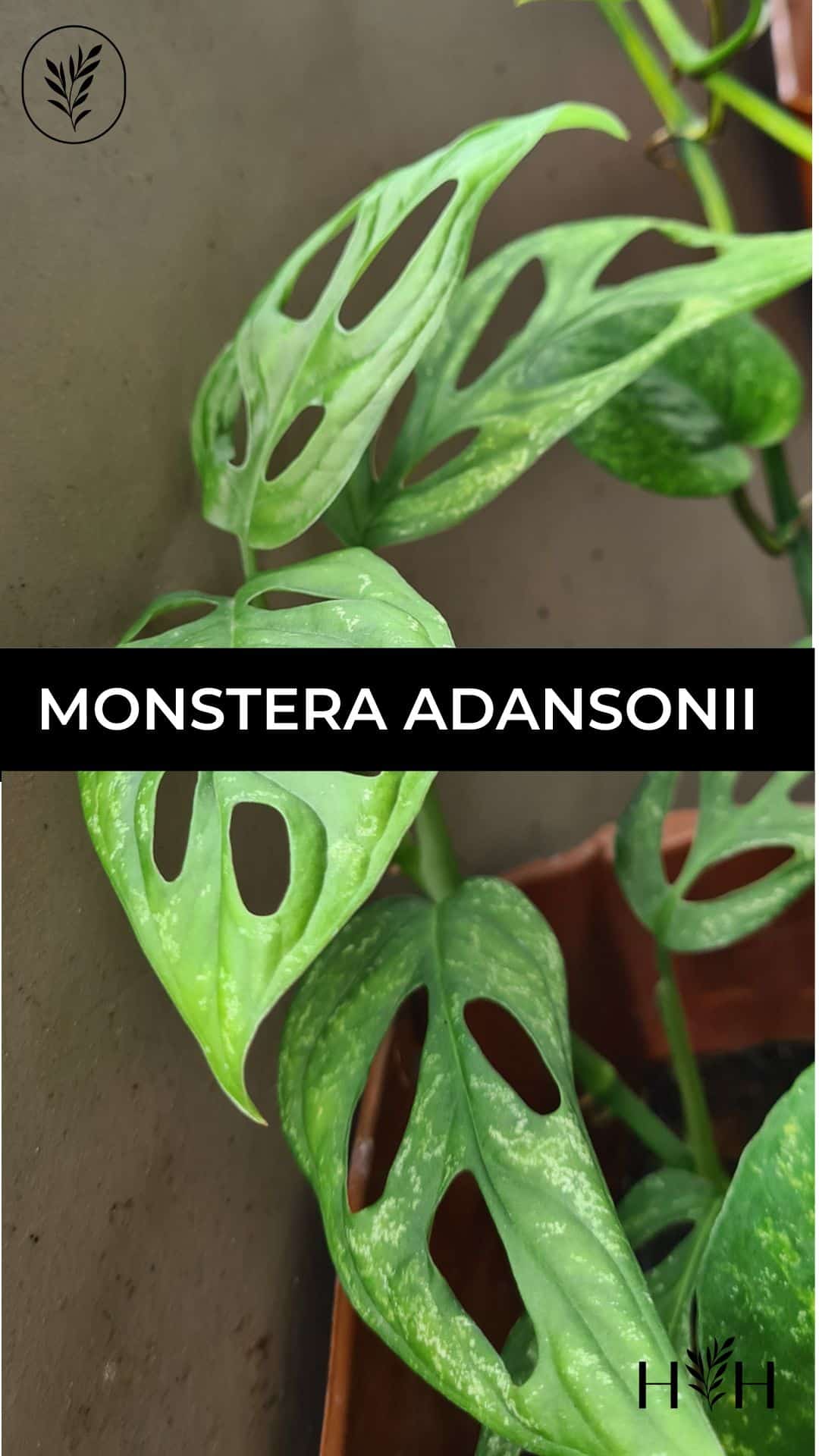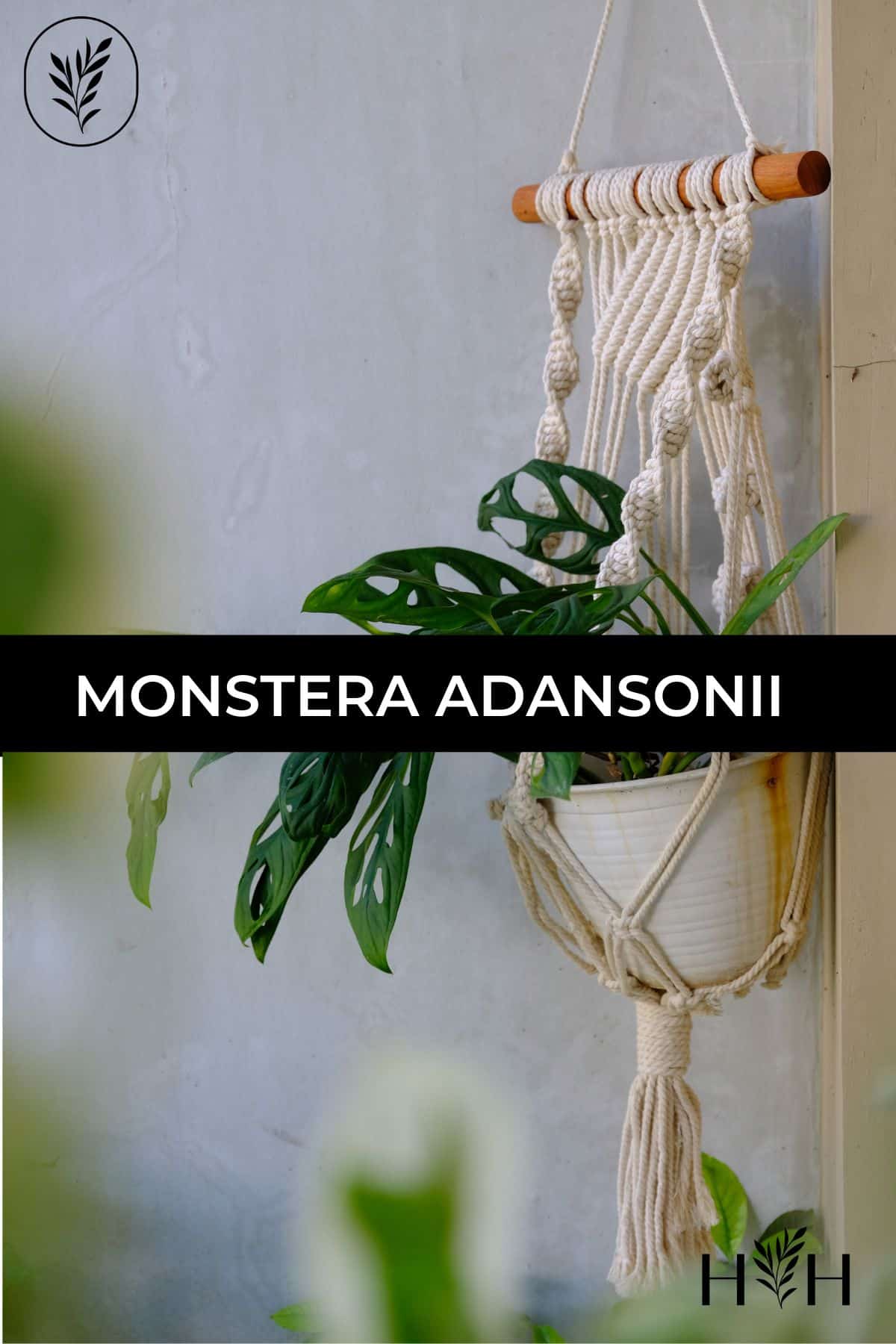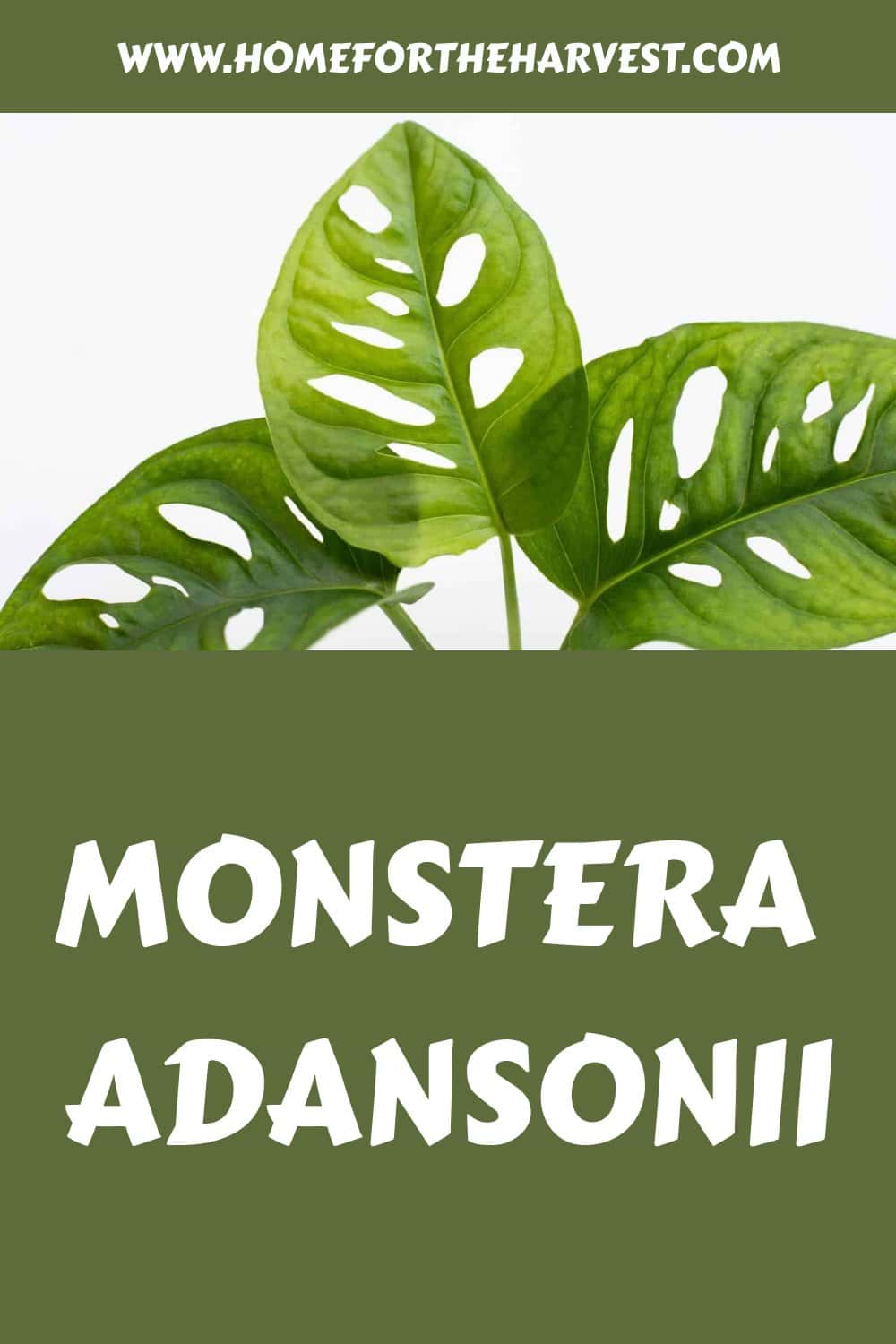The Monstera adansonii is a popular tropical plant known for its heart-shaped leaves with holes spread throughout them. This plant is commonly called the Swiss Cheese Plant because of these holes. They are native to Mexico, the West Indies, and South America. These plants are easy to take care of and make wonderful low-maintenance houseplants.
Monstera adansonii basics
Monstera adansonii is from Central America, southern Mexico, the West Indies, and South America. Monstera adansonii is commonly found near river valleys in areas with low elevation, but it can also be found in jungle-like environments with plenty of water and sunlight. This plant was first discovered around 1693.
The Monstera adansonii belongs to the Monstera genus and is a part of the Araceae (Aroid) family. Holes naturally form on the leaves of the Monstera adansonii and the relatively large leaves that the plant grows.
The Monstera adansonii has many common names. It is most commonly called the Swiss cheese plant because the leaves look similar to Swiss cheese, as they both have holes scattered over their surface. Monstera adansonii is also commonly called the five-holes plant because each leaf on the Monstera adansonii typically has five holes in it. The plant is also sometimes called Adanson’s Monstera.
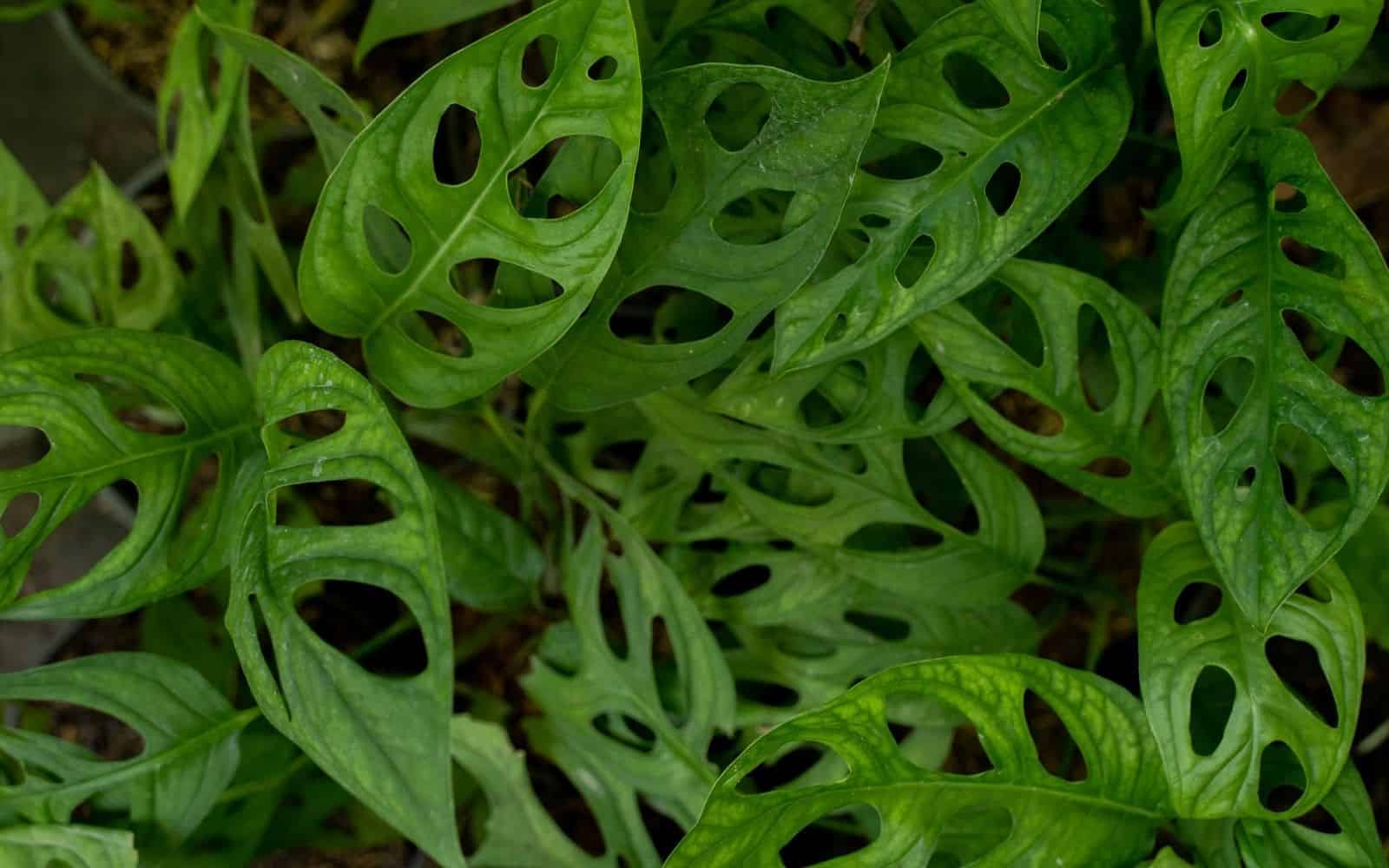
Buying Monstera adansonii plants
Many houseplant shops and some garden centers carry Monstera adansonii plants. They are becoming more popular and I’ve even seen them at big box stores lately (seasonally). Monstera plants, in general, are very popular these days.
Once you get them home, Monstera adansonii vines can grow to be quite long. They can grow to be 3-10 feet long and the leaves can grow to be 1-3 feet wide while they are indoors. If the plant is growing outside, it can grow to be around 13 feet long!
Although Monstera adansonii plants do not seem to grow very quickly, they do if they are given the right nutrients and are placed in ideal growing conditions. During one good growing season, a Monstera Adansonii can grow an extra two feet in length.
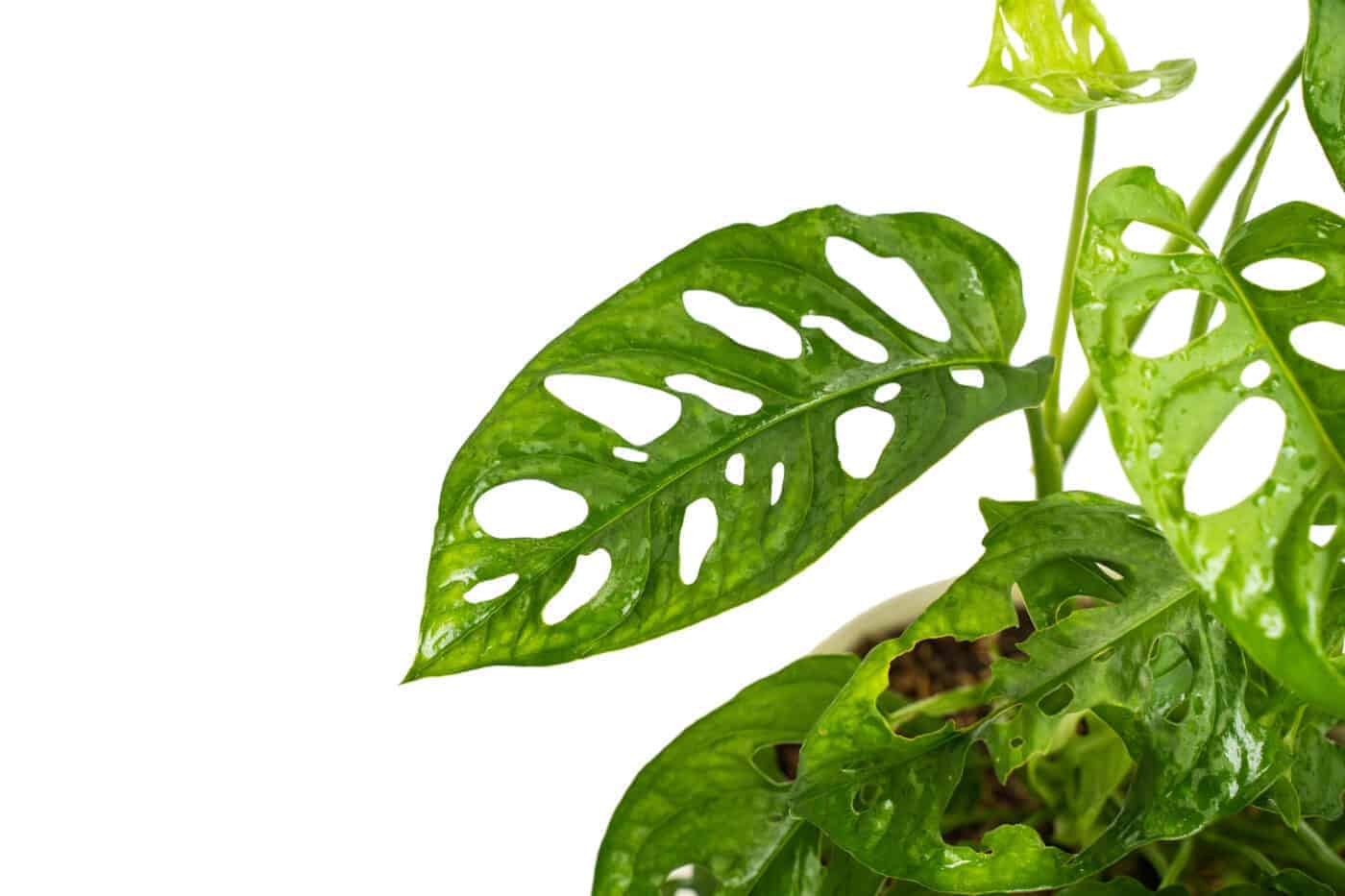
How to care for Monstera adansonii
Monstera adansonii plants are relatively easy to care for. They will thrive and grow in many different conditions that can be found inside of homes.
Light requirements for Monstera adansonii
Monstera adansonii plants grow well when they are in areas with partial shade or in areas with bright sunlight but not direct sunlight. Monstera adansonii plants can become scorched if they are left in an area with direct sunlight for more than 3 or 4 hours a day, so it is best if you avoid putting them in a place where they are exposed to direct sunlight.
Monstera adansonii plants will also grow in areas without a lot of light, but they may not grow very quickly. To help it thrive, use supplemental lighting from a plant light. I use a pendant plant light, but you can also just use a stand-alone light or even a clip-on.
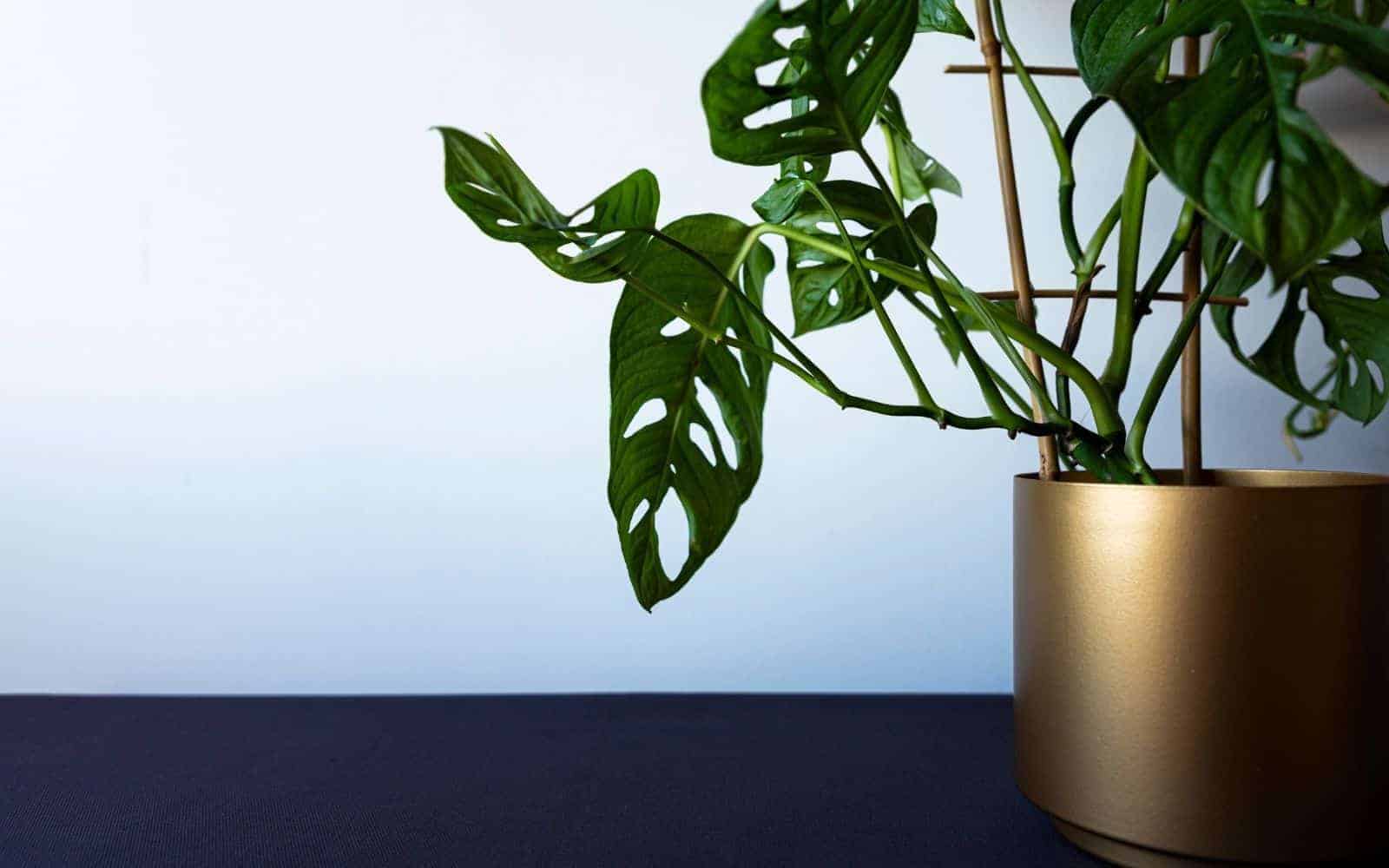
Best potting soil for Monstera adansonii plants
Monstera adansonii plants are not very particular when it comes to the soil that they are planted in but do grow best in a well-draining potting mix. They will grow in almost any well-draining soil type. However, if you want your Monster adansonii plant to thrive and grow a lot during the growing season, plant it in a porous growing medium such as an organic potting mix containing coco coir, peat, perlite, pumice, and/or another air-rich medium.
If you want your Monstera adansonii plant to grow very quickly, ensure the soil’s pH level is between 5.5-7.0. However, these plants are not too fussy about the pH level of the soil.
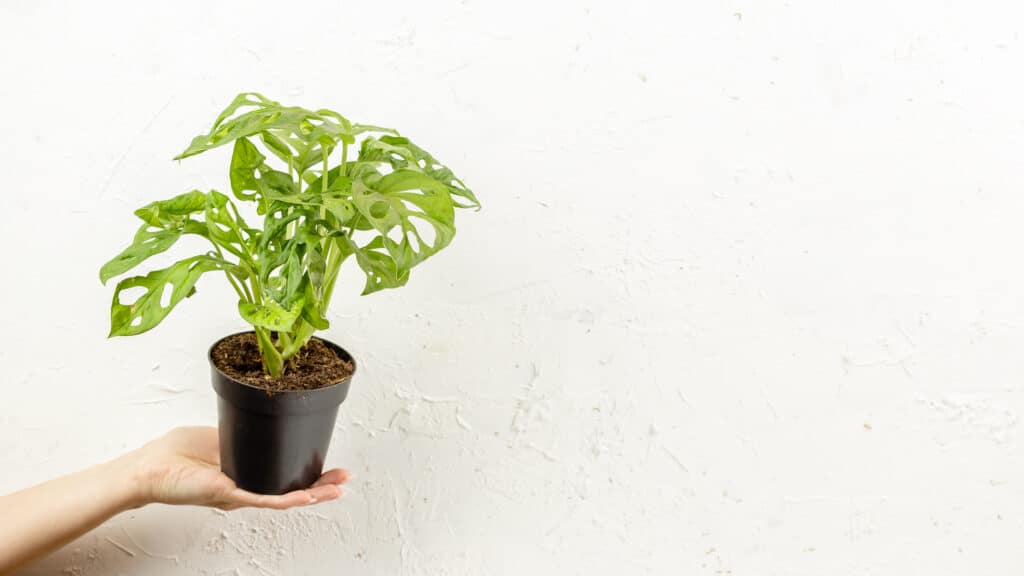
Watering Monstera adansonii plants
It is somewhat tricky to water Monstera adansonii plants because they do not like to be waterlogged or have the soil that they are planted in be soggy. If you do not want to overwater your Monstera adansonii plant, make sure that you do not add water until the topsoil is dry when you touch it.
When you water your Monstera adansonii plant, only water it until the soil is slightly saturated but not soggy. Basically, add water until it starts escaping from the drainage holes in the bottom of the pot. Be consistent when you water your Monstera adansonii plant, and make sure that the soil does not become soggy or muddy. You should only need to water your Monstera adansonii plant once or twice a week at most.
Humidity levels for Monstera adansonii
Monstera adansonii plants are from tropical climates, so they need humidity in order to thrive. If your Monstera adansonii plant seems to be dry, but the soil has been fully saturated with water, put a humidifier near it. They prefer climates with at least 50%-60% humidity. This can be hard to reach in a really dry climate, so if you’re in a dry location, at least try to keep the humidity above about 40% (a whole-house humidifier is the best for this). You can buy humidity meters online quite inexpensively.
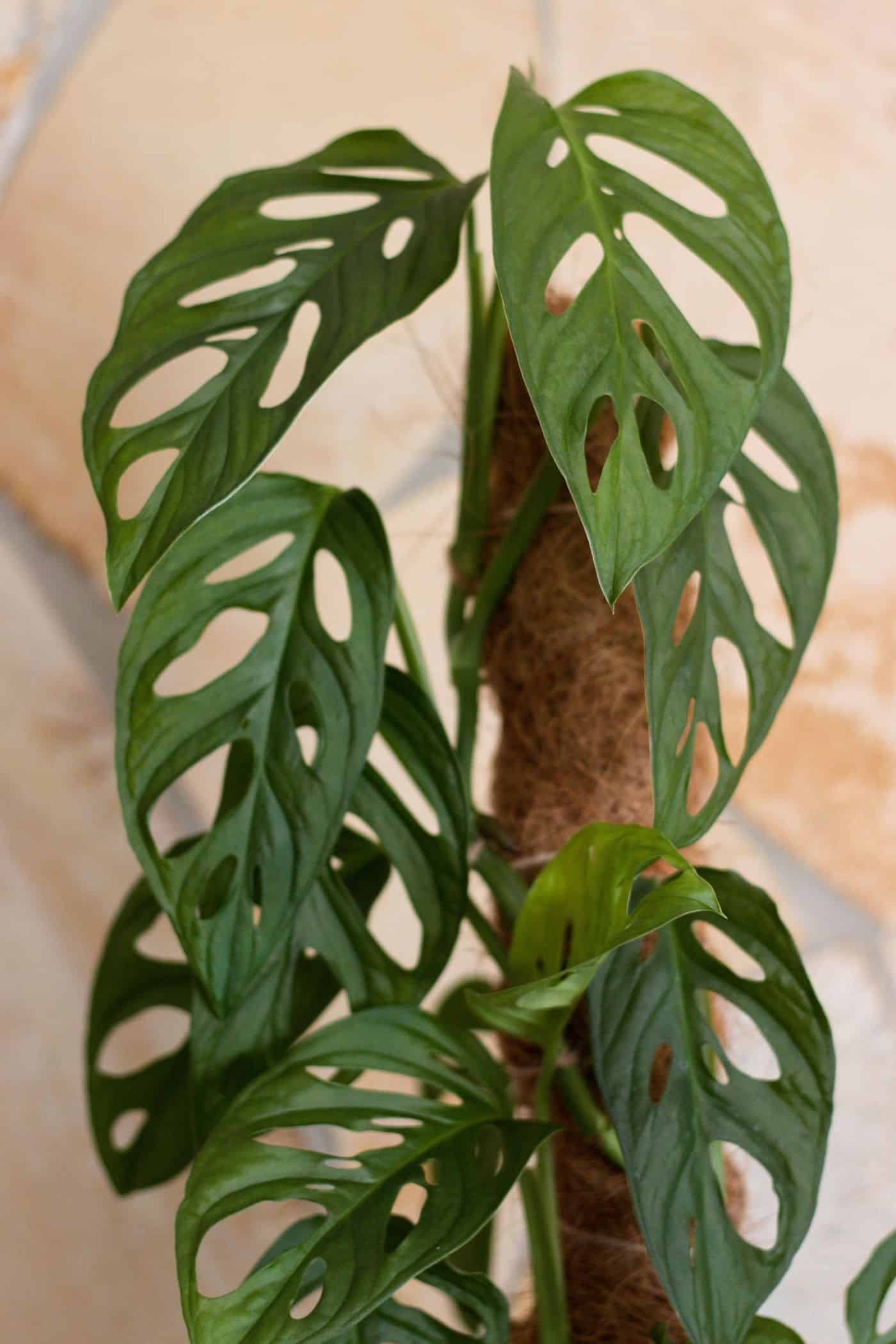
Support for vining Monstera adansonii plants
Monstera adansonii plants typically prefer climbing like vines rather than draping over the side of a planter, so you may need to add support near your Monstera adansonii plant if you want it to really grow. It is very easy to add support to your Monstera adansonii plant. Here are some common support options:
To add support to your Monstera adansonii plant, simply put the moss pole stick or stake in the pot with your Monstera adansonii plant and leave it alone. Your Monstera adansonii will eventually climb on it and use it for support.
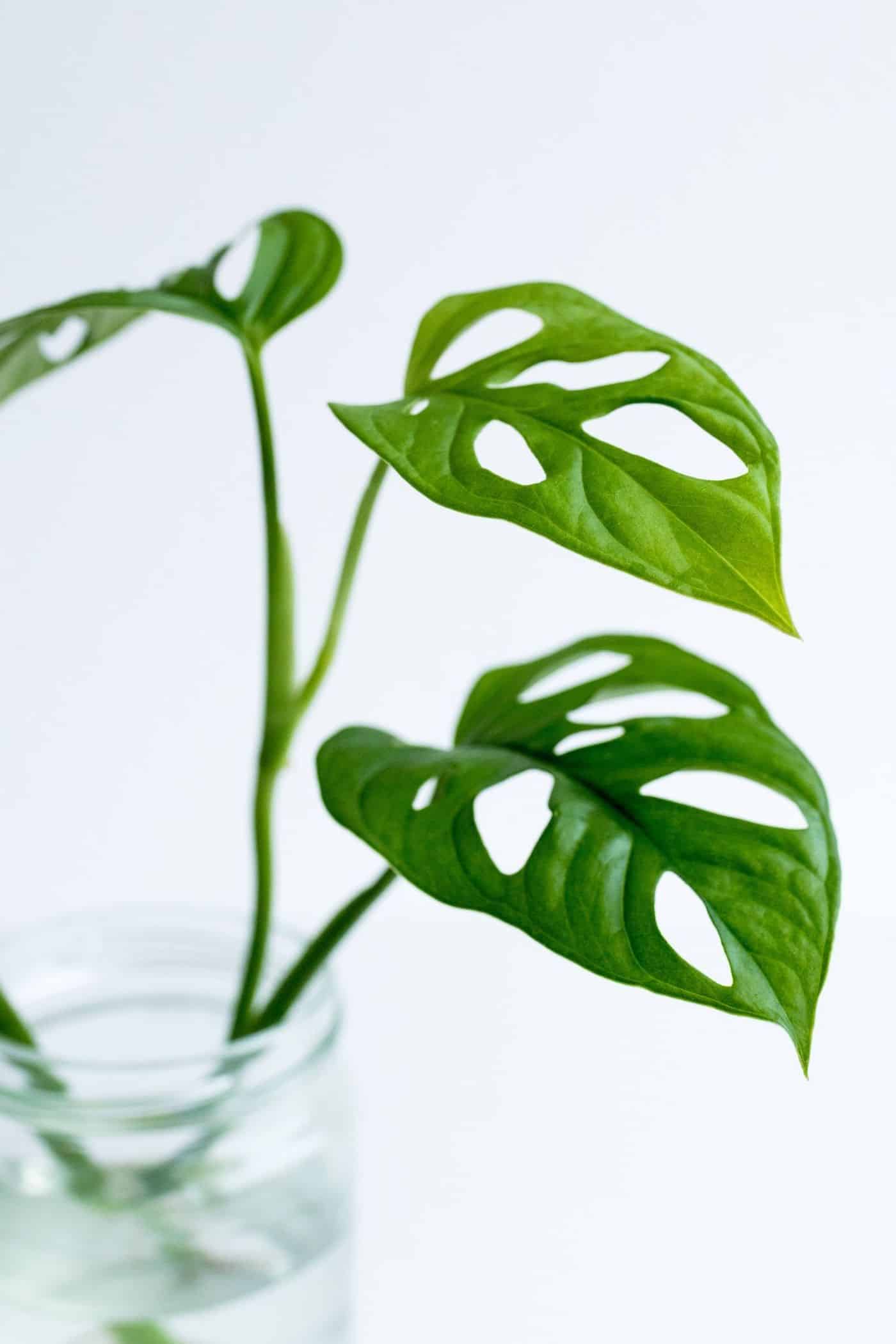
Propagating Monstera adansonii
Monstera adansonii plants are easy to propagate into new plants. The most common method is to remove a cutting from the mother plant and let it root over a matter of weeks in a jar of clean water.
Comon pestsests
Mealybugs, spider mites, and whiteflies are the most common pests that affect Monstera adansonii plants. Luckily, these bugs can be dealt with easily. If your Monstera adansonii plant seems to be affected by pests, remove all of the bugs that you can see by washing the plant in the sink or shower. It is okay if you do not remove every single one. After the bugs are removed, spray the whole plant with an organic pesticide.
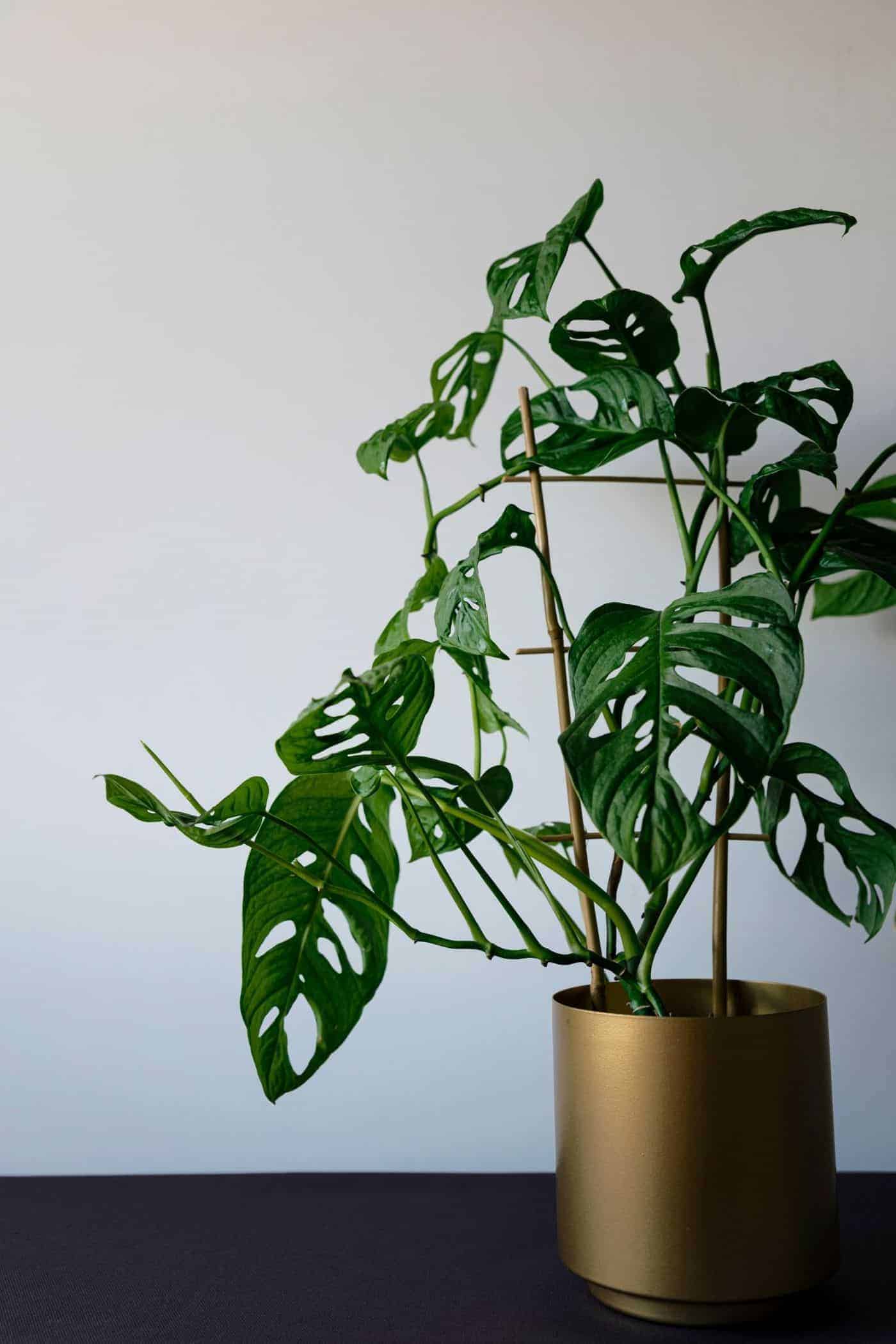
How to repot Monstera adansonii
Monstera adansonii plants only need to be repotted every other year, but they do still need to be repotted. You will know that it is time to repot your Monstera adansonii when you can see its roots coming out of the pot.
When you repot your Monstera adansonii plant;
- Get a bigger pot and place some appropriate soil in it
- Remove the Monstera adansonii plant from its old pot
- Gently break up roots slightly
- Shake out excess dirt
- Place Monstera adansonii into a new pot
- Cover with dirt and pack lightly.
It is best to repot your Monstera adansonii plant in the spring, as it will need time to recover from being repotted and get used to its new home. Do not worry if it takes a little while longer for your Monstera adansonii to begin growing again.
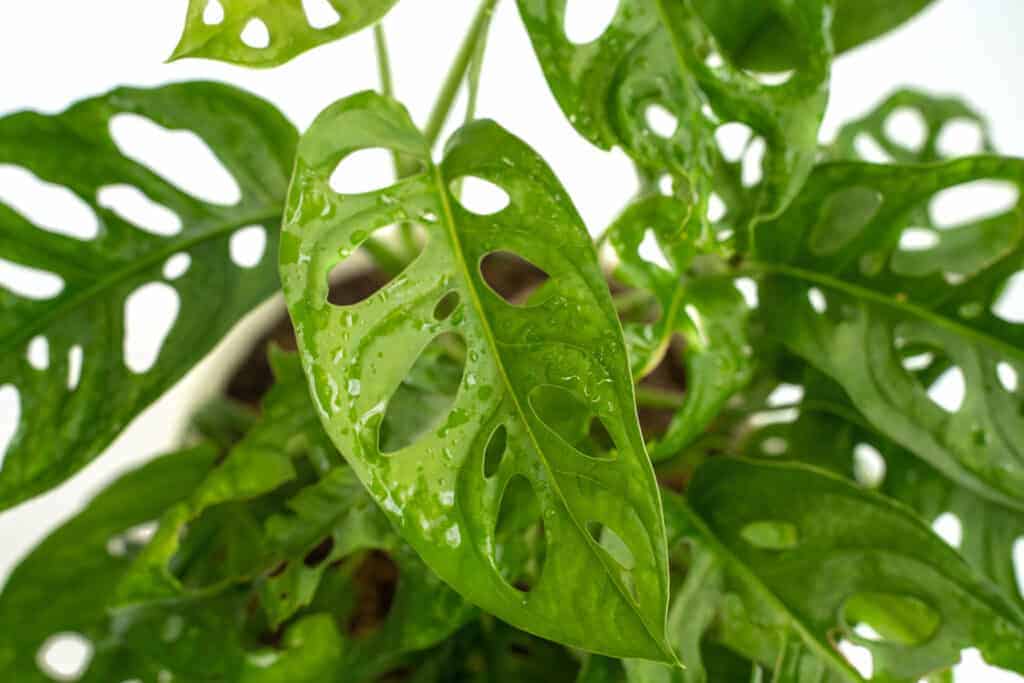
Why are there holes in the leaves of Monstera adansonii?
Monstera adansonii are thought to have holes in their leaves to allow the plant to have a greater chance of catching beams of light that pass through the overhead tree canopy. Leaves can be bigger and cover the additional areas without expending nutrients on the entire leaf area. The process of leaf hole development is called fenestration. In the Monstera adansonii, fenestration is caused by the genetics of the plant.
“In the tropical understory, flecks of sunlight make it through the canopy intermittently and erratically. The holes allow leaves to spread out over greater areas without needing to expend energy and nutrients growing extra leaf area to fill this space.”
ScienceShot: Why Are There Holes in the Swiss Cheese Plant?
Luckily, the holes do not harm the Monstera adansonii in any way. In fact, the holes allow the Monstera adansonii to grow faster because it doesn’t need to provide any nutrients to the areas of the leaves that don’t have any plant matter. These leaves enable the plant to send most of the nutrients to the vines and give them the necessary energy they need to grow (source).
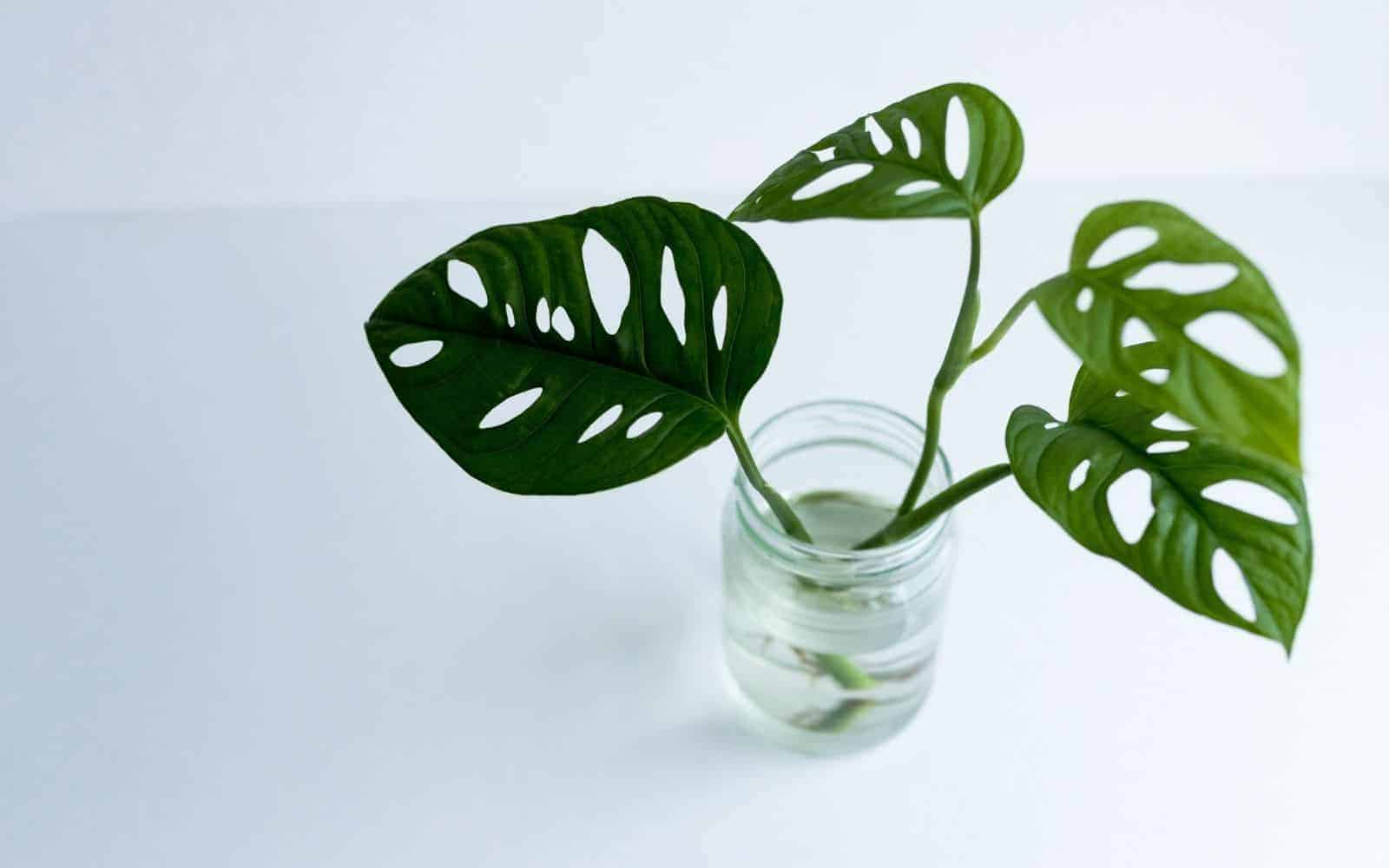
Why doesn’t my Monstera adansonii have holes in the leaves?
If your Monstera adansonii has no holes, it may be very young and needs time to grow before fenestration will start. You may need to look closely at your Monstera adansonii plant’s leaves in order to see fenestration when it is very young. The fenestration should become more noticeable after it has grown half a dozen leaves and the whole plant is about 3 feet long.
If you are worried that fenestration has not started, prune your Monstera adansonii before springtime starts, as this is the time when Monstera adansonii plants begin to grow. If you prune a few leaves off of your Monstera adansonii plant before the growing season, fenestration will likely begin to be apparent soon after because the plant needs more nutrients than usual to grow.
